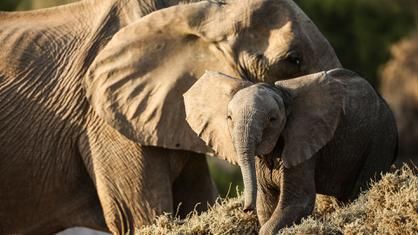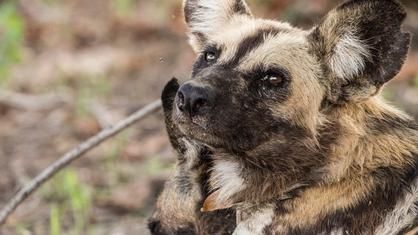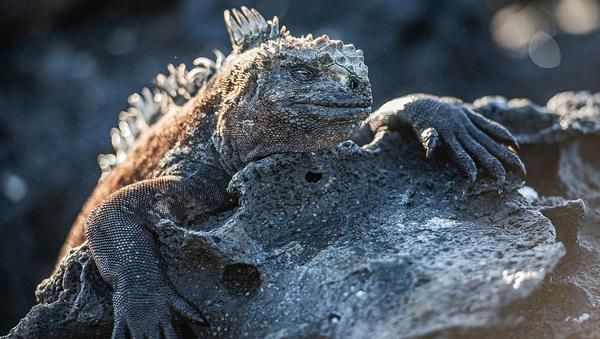
Episode One – Borneo: Sacred Forest
Air Date: Saturday, July 24 at 8pm ET/9c
Narrated by: Helena Bonham Carter
Camera: Justine Evans, Will Foster-Grundy, Jack HHynes,Roger Munns, Cede Prudente, Chris Tan, Simon Wagen
Directed/Produced by: Ingrid Kvale
Assistant Producer: Natasha Fellows
Series Producer: Steve Cole
Executive Producer: Mark Brownlow
Run Time: 52 min, 53 sec
Rating: 4 out of 5 stars
Website: www.bbcamerica.com
Comments: Borneo is a lush tropical habitate lots of foliage and Proboscis monkeys have a beautiful orange coloring on them. Their head, face and nose all stand out. Their noses are huge. They are good swimmers to having webbed feet and hands.
Salt Water Crocodiles are killers and always looking for food. As they swim along the river they look deadly.
The scenery is so beautifully filmed. At times it is like you are there. All the plants and trees jump out at you.
Orangatangs live here to. The infant one is cute.
The Sun Bear has a sense of smell one hundred times as good as a humans. This bear is good at climbing trees. He is small in size but active.
Picture plants and they are carnivorous. They do look almost as if they have teeth.
At a cave we see owls, bats and snakes and Oriental Pied Hornbill watch as the owl feasts on the bats. Than the Hornbills join in and they hunt differently.
The insects here are big. Cockroaches, centipeds and more are ravenous.
This land of Borneo is a paradise and the camera team did a fantastic job. Helena Bonham Carter does have a beautiful voice for narrating this nature video. The entire team work so hard and do so much to achieve making this video for others to watch.
Palm oil is destroying the jungles. People need to care more about the planet and all its inhabitants.

Episode Two – Namib: Skeleton Coast and Beyond
Air Date: Saturday, July 24 at 8pm ET/9c
Narrated by: Helena Bonham Carter
Camera: Ralph Bower, Kevin Flay, Louis Labrom, Pete McCowen, Robin Smith, Sam Stewart, Rowan Aitchison, Greg Nelson, Luke Nelson
Produced and Directed by: Hannah Hoare
Assistant Producer: Natasha Fellows, Libby Prins
Series Producer: Steve Cole
Executive Producer: Mark Brownlow
Run Time: 52 min, 57 sec
Rating: 4 out of 5 stars
Website: www.bbcamerica.com
Comments: Namib is a desert with very hot temperatures. It is a dry area with lots of sand. Yet life does survive here. Lions being one of them. Antelope South African Horlicks are one of its prey and these antelope have long horns. We are shown the lion hunting and bring down its prey. It has to to survive.
The Ostrich is eight feet tall and its eyes are amazing and a bit unnerving. The mating habits of these birds are put on display for us to see.
When it rains the desert blooms. All the animals enjoy the water. Desert Elephants wallow in the water. Than after it is gone they must find the means to survive. The Matriarch does lead the herd and it is on her to see that they get what they need.
The animals all look so amazing in their natural habitate.
A Yearling Black Backed Jackel looks cute like a dog yet it is not.
The Atlantic Ocean touches the shores of the desert. The largest colonies of seals live here. The jackels do have a large food source here.
The Browned Hyena is a weird looking creature. It is aggressive to.
The dunes do come alive at night. The desert Rain Frog and insects and snakes roam in the night time with cooler temperatures. The frog waits for coastal fog and the moisture it brings.
The Giraffe is tall and it is part of the desert life.
The crew who made this documentary on site had some troubles of their own.
The animals are so wonderful to see in their natural environment.

Episode Three – Luangwa: The Emerald Valley
Air Date: Saturday, August 7 at 8pm ET/9c
Narrated by: Helena Bonham Carter
Camera: Lianne Steenkamp, Will Steenkamp, Nathan Pilcher, Sam Oakes, Paul Klaver, Samson Moyo
Produced and Directed by: Valeria Fabbri-Kennedy
Assistant Producer and Inside Eden Edit Producer: Libby Prins
Series Producer: Steve Cole
Executive Producer: Mark Brownlow
Run Time: 52 min, 20 sec
Rating: 4 out of 5 stars
Website: www.bbcamerica.com
Comments: The filming here is amazing you get right up close to the animals and see them as they live. The scenery is stunningly beautiful. It is like you are really there the way this is presented.
The narration is perfectly done. The voice does deliver a clear narration while not distracting you from viewing.
The river provides for this valley. A leopard takes advantage of the river receding. Impalas are a fast deer like animal and a tasty snack.
Hippos are huge creatures. They even use night cameras which do give you a different look at them. Hippos lead an active life especially at night.
When the heat gets to much for some the vultures descend.
When the wet season comes it relieves and revitalizes the land. Rain bugs are bright red and quickly gone.
The water falls are a sight to see in this land and the rivers after it rains. The land changes as the water floods in. The land turns green.
Nile Crocadillos are a predator of the Yellow Baboons. They both want to eat.
Painted Wolves live here as well. They look cute. The Black Rhino has a distinctive upper lip and long mating habits.
The crew worked with locals to help get close to the rhines and get the cameras in. There is danger for the crew. Yet it is worth it to educate people about our planet.

Episode Four – Galapages: Enchanted Isles
Air Date: Saturday, August 14 at 8pm ET/9c
Narrated by: Helena Bonham Carter
Produced and Directed by: Jo Haley
Film Editors: Jack Roberts, Doug Main
Inside Eden Edit Producer: Pete Brownlee
Director of Photography: Lindsay McCrae
Cinematography: Santiago Cabral, Sam Stewart, Tom Crowley, Hector Skevington-Postles, Dan Beecham, Joshua Vela, Elliot Lowndes, Olly Jelley, Richard Wollocombe, Javier Mahauad, Rowan Aitchison
Assistant Producer & Inside Eden Edit Producer: Jo Avery
Assistant Producer: Libby Prins
Researchers: Oscar Furness, Lauren Jackson, Alicia Hodson
Run Time: 55 min, 24 sec
Rating: 4 out of 5 stars
Website: www.bbcamerica.com
Comments: Over one hundred and twenty islands exist here in the Galapagos. The music and the narrators voice present the beautiful video photography is absolute splendor.
Sea Lions bask on the shore. The closeups are amazing it is like they are right in your face. The mother sea lions are shown hunting and they know exactly how to do it. It is something to see the pelicans joining in with the sea lions. The babies are so cute. You are going to fall in love with these creatures. When sharks attack the bull sea lion rushes in and attacks back. The sea lions know how to enjoy life once the preditors are gone.
Penguins swim gracefully. They have also adopted to the warmer climate.
One hundred and twenty thousand iguanas live and thrive here. These vegetarians face danger as they eat. They also face being annoyed.
Boobies have Finches that are dependant on them. These Vampire Finches are resourceful. The Finches are small and they use the Boobies to survive off of without the Boobies there would be no Finches.
The daisies are giant here they are no longer flowers but trees. The Carpenter Bee in the Galapagos prefers yellow flowers.
The Giant Tortoise’s are huge reptiles. They do move exceptionally slow.
Galapagos Hawks are hunters. They move with efficiency.
The Giant Tortoises with humans coming to the island have been dwindling in numbers. Yet they still continue on and lay their eggs even though humans have made that harder to do as well. Yet humans have finally made an effort to stop hurting them and help them.
The Galapagos and the inhabitants are well shown by the team of people making this documentary. The team did have hardships filming.
This documentary is an amazing work that takes you into the lives of these creatures.
